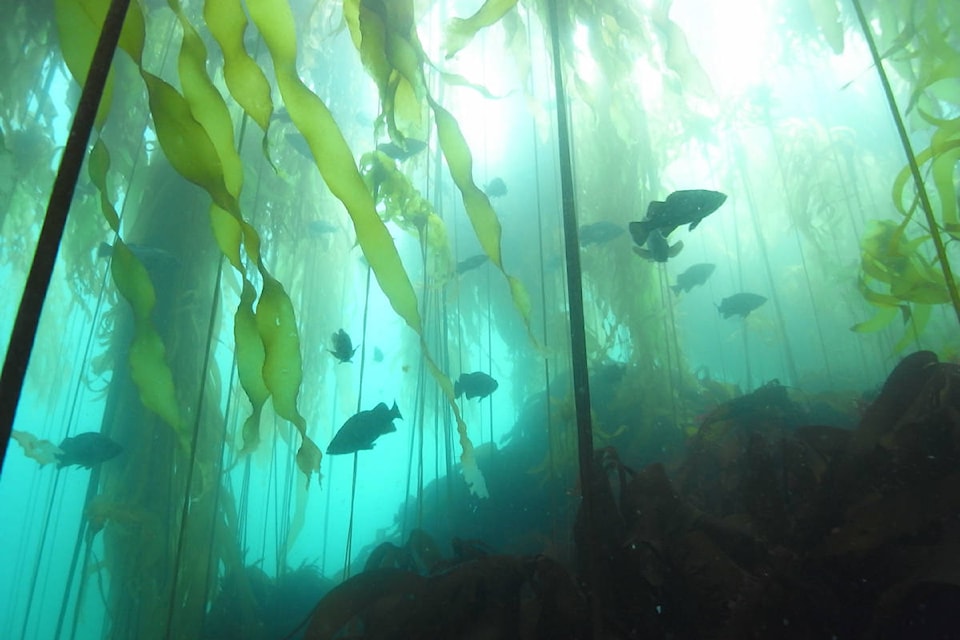An open letter to Ernie Gladstone, Superintendent of Gwaii Haanas, the members of the AMC for Gwaii Haanas, and any others influencing the Gwaii Haanas Reserve.
We feel that there is something seriously wrong in the impression that guests to Gwaii Hannas are given at the orientation to the park reserve.
What is missing misleads the visitors, and misses the mark for Canada, as well as for opportunities for the Haida to shine.
Surely, it has been wonderful to return to the former South Moresby Wilderness, now Gwaii Haanas, both because of its preserved splendour and its renewed cultural interpretive village sites. At the same time something is being inaccurately portrayed.
We operated the largest tour operation in the area in the years from 1980 until 1991, taking some 150 eight to ten day trips on either the west or east coasts. One of those trips was even set up for various Parks Canada personnel long before the Gwaii Haanas Agreement.
Our guests were passionate about preserving the area, our resource people were equally passionate and inspirational to those guests, gendering both understanding of Haida culture, and activism for stopping the logging. The MOU establishing an agreement between the Haida Nation and the federal government was made in the week we had a NY Times reporter aboard to help make the preservation issue more international.
In returning this year to Gwaii Haanas, this time as private travellers, we, of course, went to the Park’s orientation session and bought our visitors permits. The orientation, we found both overly-redacted, and frankly, revisionist.
As we have been through the orientation three times, we think the version of history as given is neither presenter dependent nor unintentional. There is a part of the orientation that is a disservice to the visitor, to some early activist Haida, as well as to the many non-Haida who fought for preservation in the ’70s and ’80s usually as a direct result of travelling here on guided trips. In that this part breaks at least two of the Gwaii Haanas Management Plan guiding principles, it misses an opportunity for the Haida too.
The offending portion of the otherwise well done orientation is the history as given of the park formation itself. In this view, a group of Haida elders stood at a blockade on Lyell Island, and were arrested, and as a result the logging was stopped and the area preserved.
No one is doubting the effect of the Lyell Island blockade, but stating it in isolation of what led up to this serves no one. Surely if this was all it took, it should have happened 10 or 20 years earlier; long before Lyell Island was logged. In reality of course the necessary climate for change was not there for Canada, for the province, or the Haida.
Missing from the picture delivered was the influence of Bill Reid’s writing and art, the science and advocacy of Bristol Foster, the interest that resulted form David Suzuki’s program on Windy Bay, the early campaigns of WCWC and of the Island Protection Society and the leadership of Guujaw, and Wanagan. Missing too is the support and campaign of the then National and Provincial Parks Association (now CPAWS) who ran trips here on our boat for several years , of the financial support of the Nova Scotia society Friends of Nature, demonstrating that it had become a national interest, of the political work done in Ottawa, well documented by Elizabeth May, and of the thousands who greeted the South Moresby train across Canada. Of importance is that much of this support resulted from early visitors, who as a direct result of days spent in the islands and interactions with some of the above people and others, who acted as guides, gave financial support and wrote letters to provincial and federal politicians. There was a powerful and effective youth movement too that garnered influential people to the cause. Federal and provincial politicians were among the tourists brought here and to our knowledge all of those returned with supportive arguments for preservation.
It is not important that any one of these people receive recognition at a parks orientation. What would serve the Haida’s interest is to acknowledge that there were many allies to the cause of preservation and that the long campaign culminated in the blockade on Lyell Island. Whether this blockade could have happened or have been successful without the support referred to above is irrelevant. What is relevant is that like most environmental campaigns, this one started slowly, built over the years, had key individuals and societies lend support, and was successful because of the many allies and sometimes because of unsolicited and unrecognized behind-the-scenes efforts.
The establishment of Gwaii Haanas as a National Park Reserve and Haida Heritage site was a truly Canadian endeavour with people across Canada allying themselves with the Haida. This should be celebrated, and surely should be part of the orientation for a new visitor.
Irene Whitney
Al Whitney
former operators of Pacific Synergies-Nature, Art and Anthropology Expeditions Under Sail and of the SV Darwin Sound
